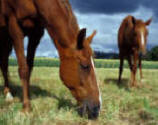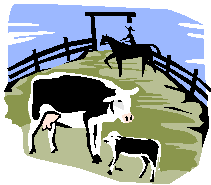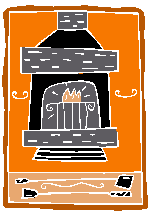

To send a message to an author, click on the author's name at the end of the article.
This Month in Ag Connection | Ag Connection - Other Issues Online
The stock market has lost a lot of luster. A popular adage is "If life hands you lemons, make lemonade". Many people have a traditional Individual Retirement Arrangements (IRAs). One thing is fairly certain - when you take money out of your traditional IRA - you'll owe ordinary income tax on the withdrawal. On the other hand, a major advantage of a Roth IRA is withdrawals are not subject to income tax. Now may be an opportune time to convert a traditional IRA that is invested in the stock market to a Roth IRA. This transfer will allow the future gain in value of the account to accumulate and to be distributed tax-free.
For example, if your traditional IRA has decreased in value, let's say from $180,000 to $130,000 -- you've suffered a $50,000 paper loss. If you convert this traditional IRA to a Roth IRA and it later recovers to $180,000 - that $50,000 gain in value will be available to you tax-free. If you don't make the conversion to the Roth IRA and the value recovers back to the $180,000 - you'll pay tax on the $50,000 value increase in the traditional IRA when you withdraw those funds.
For 2008 and 2009, you can convert amounts from a traditional IRA to a Roth IRA if your modified adjusted gross income is not more than $100,000 and you are not a married individual filing a separate return. Modified adjusted gross income is basically your adjusted gross income, not including the income from the conversion and not including any deductions for traditional IRA contributions. Conversions can be completed in one year or spread over a number of years to avoid being forced into a higher tax bracket. For taxpayers with modified adjusted gross income above the $100,000 limit - this limitation will be eliminated starting in 2010.

Factors that tend to favor conversion are:
The take-home message is distributions from a traditional IRA are taxable in the year of distribution. Thus, when you believe the stock market has bottomed, consideration should be given to converting a traditional IRA to a Roth IRA and paying the income tax on the converted amount. Later distributions from the Roth IRA which would include any capital growth and accumulated earnings of the Roth IRA can be distributed without any additional income tax liability. For more detailed information, on converting your IRA get the free IRS Publication 590 "Individual Retirement Arrangements" by calling the IRS toll free number 1-800 TAX FORM.
(Source: Parman R. Green, MU Extension Ag Business Mgmt. Specialist)
This Month in Ag Connection | Ag Connection - Other Issues Online
It is always a challenge to think about preparing for winter prior to the first cold front or snow storm. The problem in Missouri is that we never know when this weather may hit, so it is best to prepare well in advance. That time of year is now upon us. With the cost of keeping a horse increasing and the value of the average horse decreasing, it is more important than ever to be proactive in preventing injuries to your horse and damages to your fences and property over the winter months.

It is wise to keep in mind most of the following tips throughout the entire year, not only in winter:
These tips seem fairly common sense, but are easily overlooked. Performing these simple tasks can prevent extra costs and problems and also help keep you and your horse safe.
(Source: Dee Cooper, Livestock Specialist)
This Month in Ag Connection | Ag Connection - Other Issues Online
One of the programs of the new farm bill (Food, Conservation and Energy Act of 2008) that pertains to grain farmers is called Average Crop Revenue Election or ACRE for short. Producers of wheat, soybeans and corn will have the option to enroll in this new counter-cyclical revenue plan. One of the main differences with counter-cyclical and the ACRE program is that the new program is based on gross revenue (commodity price x yield), rather than price alone.
ACRE uses a combination of state average yields, farm level yields, and the national marketing year price to determine levels of revenue guarantees and payments for each covered commodity. Before any ACRE payments are generated, two revenue triggers have to be met: 1) one at the state level (marketing year price x state average yield) and 2) one at the farm level (marketing year price x actual farm level yield), both of which must be less than their corresponding guarantees. If both of those triggers are met, the payment to the farm will be the difference between the state guarantee and the state actual revenue.
Those who sign up for ACRE will forfeit 20% of their current direct payments through 2012. They also give up any potential counter-cyclical payments (CCP); and the loan rate used to calculate their loan deficiency payments (LDP) or marketing loans will be lowered by 30%. ACRE does not protect a farmer who has a poor production year when the state as a whole does not.
| Categories | Amount (figures in billions of dollars) |
|---|---|
| Commodity Programs | $85.5 |
| Conservation | $54.7 |
| Nutrition | $406.3 |
| Everything Else | $67.9 |
| Total | $614.5 |
The decision to participate in this program requires some thought. Will the beginning base year be determined by the 2006-07 crop year prices or the 2007-08 crops? Most producers will not want to decide until the base price is determined. A producer may choose to sign up for ACRE beginning in any crop year from 2009 through 2012. Once enrolled in ACRE, you must remain in the program through 2012.
ACRE is another risk management program that is available to farmers. There is work being done to create software to aid the decision making process. As more information, becomes available it will be presented in area winter farm bill meetings.
(Source: Mary Sobba, MU Extension Ag Business Specialist)
This Month in Ag Connection | Ag Connection - Other Issues Online
Beef cattle producers have several feedstuffs available now that weren't common a few years ago. Many of these products contain a considerable amount of water. Producers must understand how water in feedstuffs affects the amount of feed they need to provide their livestock and how moisture impacts the nutrients they are providing in the ration.
Two of the most common wet feeds are haylage and modified distiller's grains. Both of these feeds contain about 50% water. Hay and dried distiller's grains contain about 15% water. So let's compare the "wet" version of these feeds with the "dry" version.

First, let's consider hay vs. haylage. In 1,000 pounds of hay at 15% moisture (or 85% dry matter), there are 850 pounds of dry matter. A 1,200 pound beef cow that is not nursing a calf and is in mid gestation has a daily dry matter intake requirement of 24 pounds. The 1,000 pound bale of hay will feed 35 cows for one day (850 lbs. dry matter / 24 pounds dry matter per cow = 35 cows).
A 1,000 pound bale of haylage at 50% moisture (or 50% dry matter) will provide 500 pounds of dry matter and will only feed 20 cows for one day. In order to provide the same amount of dry matter contained in a 1,000 pound hay bale, you need to feed 1,700 pounds of haylage.
The concept is exactly the same for dry vs. modified or wet distiller's grains. If the goal is to provide 3 pounds of distiller's grains on a dry matter basis, you need to feed 3.5 pounds as-fed dried distiller's grains, 6 pounds as-fed modified distiller's grains or 12 pounds as-fed wet distiller's grains.
Looking at this a slightly different way, 3 pounds as-fed dry distiller's grains provides .77 pounds of protein and 2.24 pounds of TDN; 3 pounds as-fed modified distiller's grains provides .45 pounds of protein and 1.32 pounds of TDN; 3 pounds as-fed wet distiller's grains provides .23 pounds of protein and .66 pounds of TDN.
You must also pay attention to moisture content when you are buying feedstuffs. If you are buying haylage, modified distiller's grains or wet distiller's grains, you need to realize you are purchasing a considerable amount of water. These wet feeds are cheaper per ton as-fed, but may not be cheapest on a dry matter basis. Dry matter provides the nutrients, so be sure to compare feeds on an equal moisture basis.
(Source: Gene Schmitz, MU Extension Livestock Specialist)
This Month in Ag Connection | Ag Connection - Other Issues Online
Part II - In last month's article, the use of wood was discussed as an alternative heat source. Wood stoves can provide supplemental heat for a room or a whole house using a totally renewable energy source. Wood is readily available in this area.
However, a wood stove also has some disadvantages. Firewood must either be cut or purchased and storage of any significant amount can take a lot of room. A fire must have fresh fuel added periodically to maintain the heat output. Wood must be carried into the house and the ashes removed on a regular basis. Both the wood and ashes can create a mess inside one's home. If your home does not already have a chimney, one must be added to vent the smoke and gasses outside the home.
In many cases, people want the ambiance and heat provided by a fire without the hassles of cutting, storing and carrying firewood as well as disposing of the ashes. They also don't want to be tied to their stove adding fuel every couple of hours. Add to that the expense of adding a chimney to an existing home (most folks don't want a stove pipe running up the outside of their home), and a wood stove is no longer an option. Cheer up - there is another option. Pellet stoves were invented to address these concerns.

As the name implies, pellet stoves burn wood pellets in place of firewood. The wood pellets look a lot like rabbit food and they are generally 100% natural. They can be made from waste sawdust. The sawdust is heated and compressed causing the natural resins in the wood to stick together forming pellets.
A wood pellet stove is a convenient-to-use, earth-friendly heating source. It can be used to provide supplemental heat to a room or to most of a house. They are available as freestanding units or fireplace inserts. The freestanding units are simple to install because no chimney is required. An exhaust fan inside the heater blows the flue gases outdoors through a short double-walled vent pipe in the wall.
The efficiency and clean burning characteristics of a pellet stove are the result of burning the small pellets with a lot of combustion air. With the tremendous amount of surface area on the tiny pellets and the exhaust fan pulling the gases away, they burn completely creating no smoke and very little ash. The combustion chamber on most pellet stoves is only slightly larger than a softball.
Unlike most wood stoves, the heat output from a pellet stove is easy to adjust and can be controlled with a thermostat. A hopper on the back of the stove holds the pellets, which are dispensed into the fire pot by a small auger. When more heat is required, the speed of the auger is increased. An adjustable fan built into the stove circulates the room air through heat exchangers providing better heat dispersion.
The pellets are sold at most home centers as well as other stores in 40-pound bags for $4-6 a bag. At a low heat setting, enough to take the chill off a room or two, a bag of pellets will last 30-40 hours.
For all its advantages, pellet stove do have a couple of disadvantages. The circulating fan, exhaust fan and the pellet auger both require electricity to operate. Therefore when the power goes out, so does the heat from your pellet stove (unless you have a standby power source). Also, the pellets can be a little difficult to find in some locations. If you run out of pellets, your fire is also gone. The 40-pound bags of pellets must be kept dry and their large size makes it difficult for some people to handle.
Another type of stove that has become more prominent in the past few years is the corn stove. These stoves are an offshoot of the pellet stoves and burn shelled corn in place of the purchased pellets. In some cases, pellet stoves can be converted to burn corn. The operation and installation of the two stoves is virtually identical. The corn stove uses a 100% natural and renewable fuel that is readily available in our area. The real advantage is the amount of heat available from a bushel of corn.
Either a pellet stove or a corn stove can provide heat to your home as well as the natural allure of a burning fire. Depending on the size and location of the stove, they can provide supplemental heat to a single room, or keep several rooms in the house toasty warm. There are even a couple of models available that can be added to your current forced air central heating system to heat your entire home. Many of the newer pellet stoves are quite attractive and the main body of most is made of heavy gauge welded steel with a decorative cast iron and glass door.
Material adapted from an article by: Jim Crawford, MU Extension Natural Resource Engineering Specialist.
(Source: Kent Shannon, MU Extension Natural Resource Engineering Specialist)
This Month in Ag Connection | Ag Connection - Other Issues Online
Publishing Information
Ag Connection is published monthly for Northeast and Central areas of Missouri producers and is supported by the University of Missouri Extension, the Missouri Agricultural Experiment Station, and the MU College of Agriculture, Food and Natural Resources. Managing Editor: Mary Sobba.